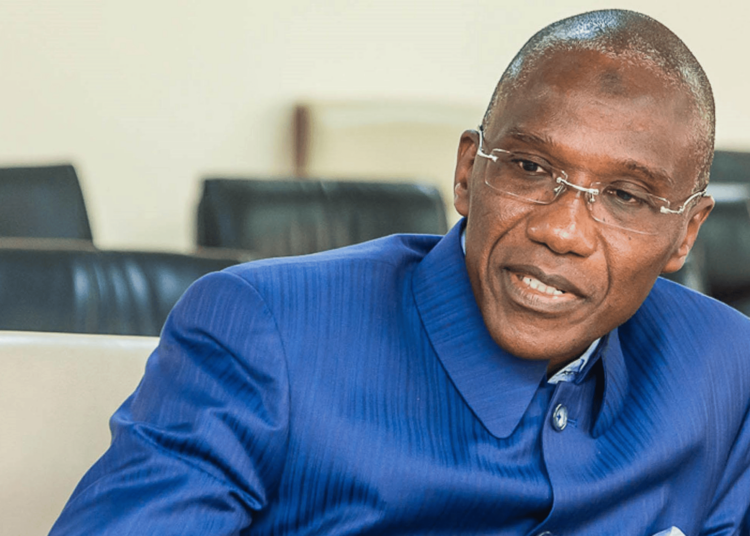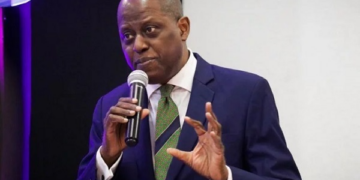Top debtors, who owe 84 per cent of the Asset Management Corporation of Nigeria (AMCON) debts are battling the corporation in courts over the unrecovered N3.9 trillion, LEADERSHIP learnt.
This is prolonging the ability of AMCON to meet its recovery mandate as the majority of 350 individuals and business entities who owe N3.9trillion seem to have tied AMCON down in courts, a situation that has stalled efforts to resolve the cases.
After the first meeting between the managing director and chief executive officer(CEO) of AMCON, Mr Ahmed Lawan Kuru and the minister of Finance and Coordinating minister of the Economy, Mr Wale Edun, the minister had disclosed that the federal government was working towards winding down the asset management behemoth, which was established at the height of the non-performing loan crisis in 2010, to clean up the heavily encumbered books of the banks.
However, attempt to wind down AMCON’s operations, established by an Act of the parliament and given more biting power by subsequent amendment, to go after bad debtors could be premature with government having to create another channel to offset the debt instruments the Central Bank of Nigeria (CBN) issued to fund AMCON’s operations ab-initio.
During an interactive session with journalists in Lagos recently, Kuru suggested that the company is far from resolving the pending cases as litigation stalls processes leading to quick resolution of the pending cases.
According to Kuru, 257 cases out of the 350 obligors who sit on over 84 per cent of dead assets of banks inherited by AMCON are currently at different stages of litigation. Hence, he said, the underlying assets used as collateral cannot be liquidated by the organisation, at least, for now.
Kuru also hinted that some obligors of AMCON were jubilant, and some even stopped picking calls thinking that they will walk away from the debt once AMCON winds down.
To him, “when some of them (the obligors) heard the news of the proposed AMCON sunset, they stopped picking our calls. So, in their mind, they believe AMCON would soon close shop, which would mean that the government would write-off the debt. I want to state here today that the process of winding AMCON down will be a process, and nobody, no government would allow any debtor walk away. It is not possible.”
He stressed that 350 obligors or 2.8 per cent of the total 12,700 debtors involved in the non-performing loan (NPL) hold 84 per cent of the total amounts, which have continued to accumulate interest.
From inception, Kuru said, the corporation has only sold 350 assets, while most are not in the market owing to legal encumbrances. But apart from litigation, he said, pricing may have also slowed the speed of disposing of the assets, adding that, the pricing template is set by CBN guidelines, which set the value above what prospective buyers consider above-market prices.
More than 100 assets, Kuru noted, have been in the market for some time but ‘there are no buyers because they are overpriced owing to their purchase prize.’ He added that, “Pricing of AMCON assets is very strict. Even when we get permission from the Central Bank to auction, we cannot still sell some of them because the price is still very high. It is not a case of picking the highest bidder, but a case of management getting an offer that must cover the debt an asset is pledged.”
The AMCON boss asked the affected debtors who are interested in resolving their cases with the corporation to make a serious offer, saying it ‘understands that the transactions involved are commercial and not criminal.’
Some debtors, according to him, are disillusioned that the debts would be written off, hence they stopped picking up calls from the officials since the government disclosed that the programme would be brought to closure.
He stressed that, the debts would remain and would be paid even if AMCON ceases to exist, saying, the federal government, through the CBN, remains the main creditor (and owner) of AMCON holding around N5.3 trillion of its bonds (including N1.3 trillion bonds issued to acquire Polaris Bank).
Kuru stated that the frustration encountered by the firm in setting up NG Eagle led it to sell the last stages of its Air Operator Certificate (AOC) to an unnamed company, which plans to begin air operations.
The NG project was truncated at stage five of the process of getting its Air Operator Certificate (AOC). The NG Eagle’s AOC processes are expected to expire this week, and it is incumbent on the new owner to continue with the processes or allow it to expire.
Kuru said: “we started the process of setting up NG Eagle. It took us two years to follow the process. We went through the rigour of getting the license. At that point when we were about to pick up the license, some people came up and said that we were trying to set up a national carrier. We were frustrated. If you recall, three aircraft were branded sitting on the tarmac and they sat on the tarmac for one and half years, which was very strange to us at AMCON.”
“We went through the process all to the point that we were to pick our license. They thought we wanted to float a national carrier. Unfortunately, we were not encouraged, and we were not able to deal with it up to the extent that we had to find a way of dealing with the license because it was expected to expire within some time. We started the process, and we were able to sell the process to somebody who intends to do airline business if he meets the requirements of the NCAA before the license expires.”
Kuru explained that AMCON does not take pride in taking over thriving businesses but noted that it just happened that the firm got caught up in the Arik saga and intervened to save the carrier.





